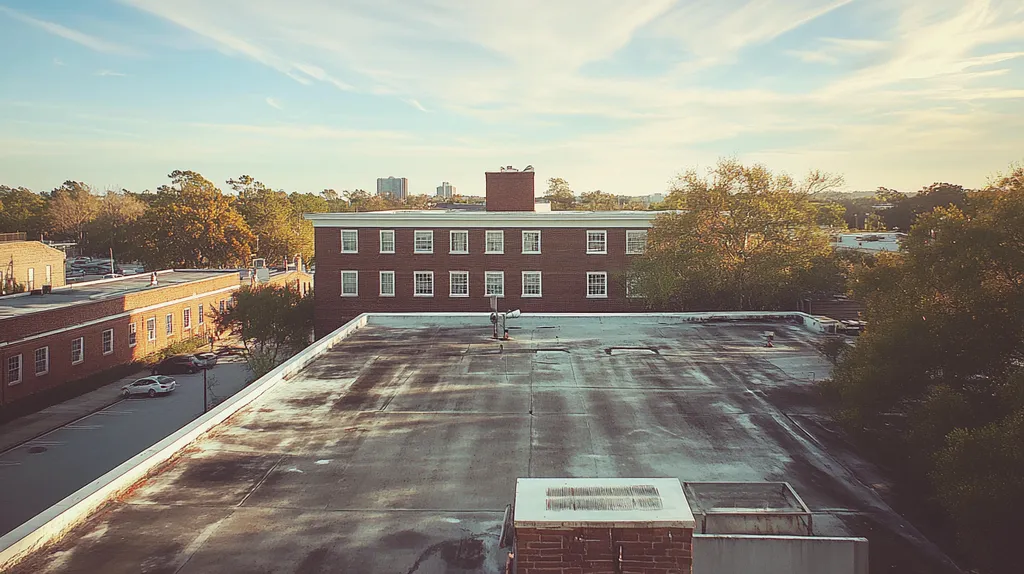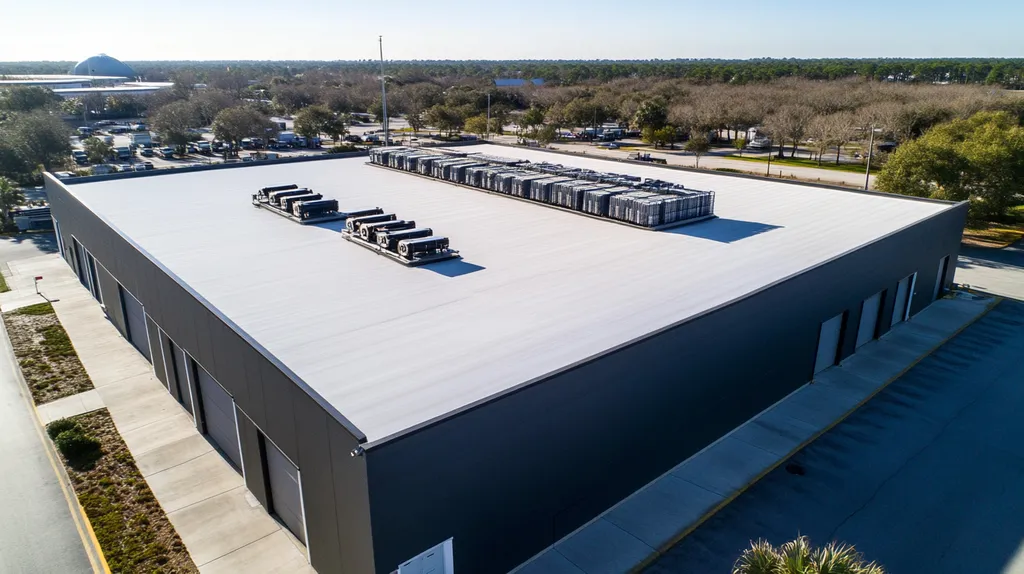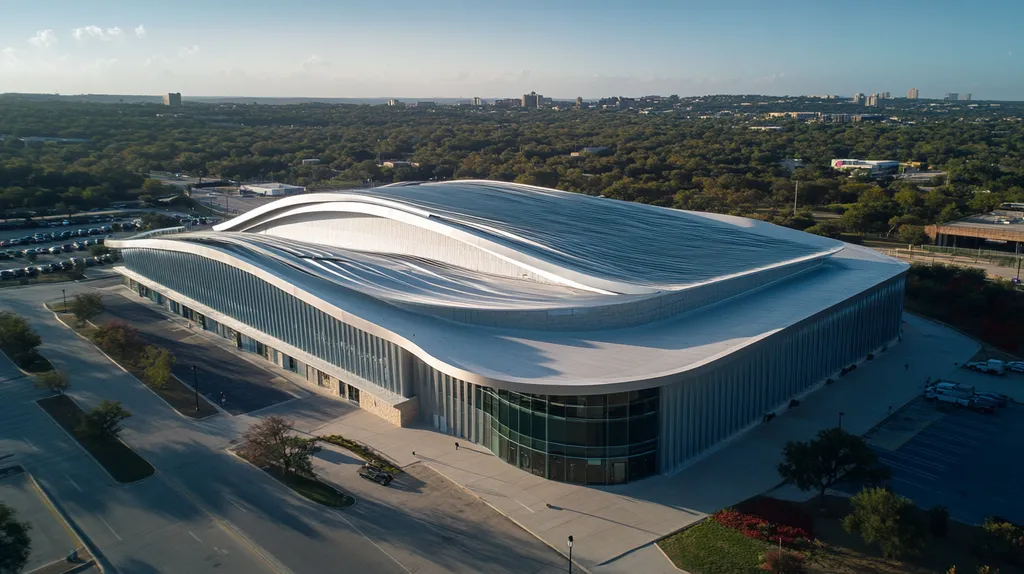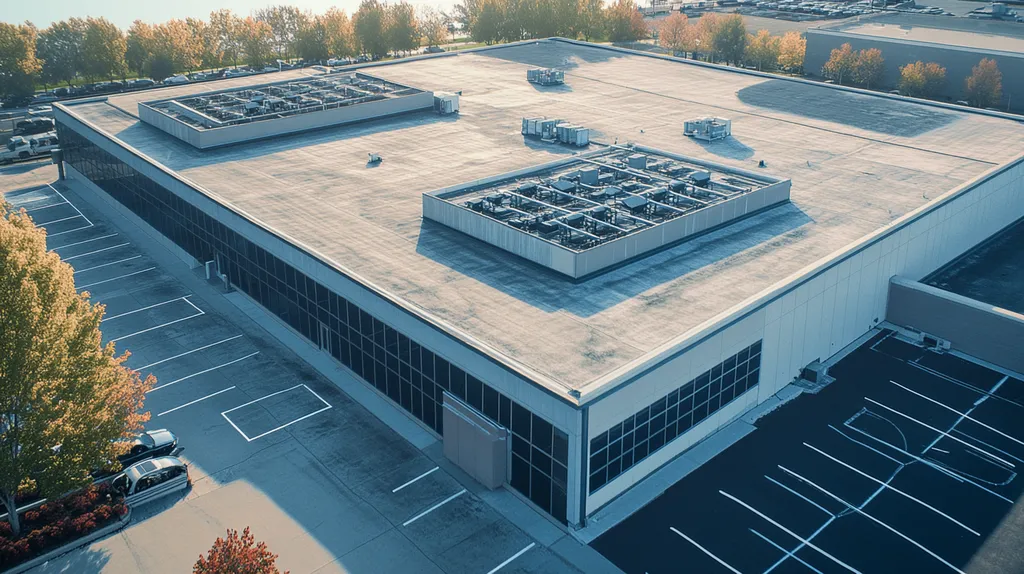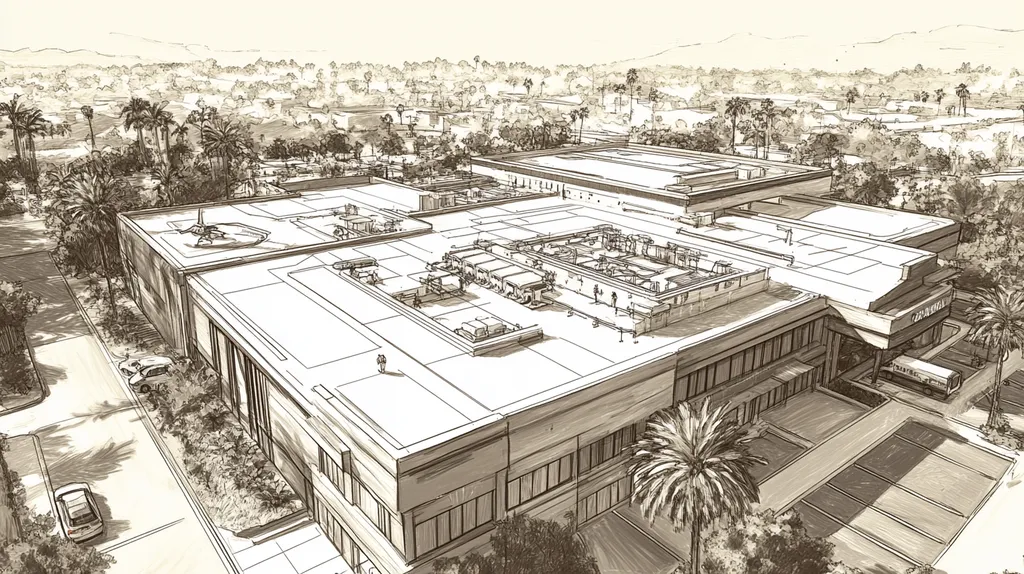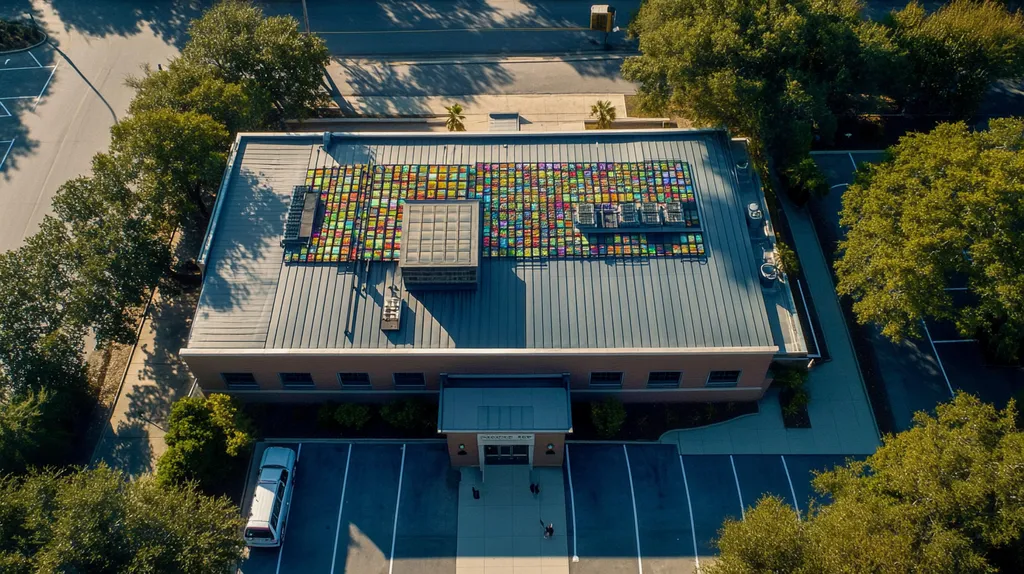Every year, commercial building owners lose millions in premature roof failures, with studies showing that 65% of these failures stem from poorly integrated coating systems. The stakes are particularly high as energy costs soar and extreme weather events increase in frequency.
Proper integration of coating systems with roof components can extend service life by 15-20 years while reducing energy costs by up to 30%. Yet most commercial properties lack the comprehensive knowledge needed to optimize these critical protective systems.
This guide explores the fundamentals of coating integration, from material selection to implementation strategies, providing facility managers with actionable insights for maximizing roof performance and protection.
SECTION 1: FUNDAMENTAL CONCEPTS
Commercial roofing systems face unprecedented challenges from extreme weather patterns and rising energy costs. Studies show that properly integrated coating systems can extend roof life by 10-15 years, yet over 60% of commercial buildings lack adequate protective coatings. This oversight leads to premature failures and excessive maintenance costs. Understanding the fundamentals of coating integration is crucial for protecting these valuable assets.
Introduction to Roof Coating Systems
Coating systems serve as the primary defense against environmental stressors, including UV radiation, thermal cycling, and moisture penetration. These systems create a seamless, protective layer that shields underlying roofing components from degradation.
Modern coating technologies offer enhanced durability through specialized formulations designed for specific climatic conditions. Different coating types work together to provide comprehensive protection while maintaining flexibility and adhesion.
The effectiveness of a coating system depends heavily on proper integration with existing roof components. Cold-applied systems, for example, work particularly well with various vapor retarders and modified bitumen sheets. (source: IKO)
Regular monitoring and maintenance of coating systems ensure optimal performance throughout the roof’s service life. This proactive approach helps identify potential issues before they escalate into major problems.
Benefits of Coating Systems Integration
Properly integrated coating systems significantly reduce life-cycle costs through prevention of premature aging and deterioration. These systems can decrease roof maintenance expenses by up to 25% annually.
Energy efficiency gains represent another crucial benefit, with reflective coatings reducing cooling costs by 15-35% during peak summer months. This improvement directly impacts operating expenses and environmental footprint.
Water resistance increases dramatically with integrated coating systems, preventing costly interior damage. Modern coatings create a seamless barrier that adapts to building movement while maintaining waterproof integrity.
Enhanced durability translates to extended service life, often doubling the functional lifespan of roofing components. This extension provides substantial return on investment through delayed replacement costs.
Key Coating Types and Materials
Acrylic coatings excel in UV protection and offer excellent color stability. These water-based solutions provide good adhesion to most substrates while remaining cost-effective for large applications.
Silicone coatings deliver superior weathering resistance and maintain flexibility in extreme temperatures. Their molecular structure creates an exceptionally durable barrier against ponding water and harsh environmental conditions.
Polyurethane systems offer the highest impact resistance and exceptional tensile strength. These characteristics make them ideal for high-traffic areas and regions with severe weather patterns.
Hybrid coating systems combine multiple technologies to maximize performance benefits. These specialized solutions address specific challenges while providing comprehensive protection across diverse roofing configurations.
SECTION 2: SYSTEM COMPONENTS
Every year, commercial building owners lose millions due to premature roof failures caused by mismatched or poorly integrated system components. Studies reveal that 40% of roof coating failures stem from incompatible materials and inadequate drainage solutions. Understanding the critical relationship between membranes, reinforcement materials, and drainage systems can prevent costly failures while maximizing protection of valuable assets.
Roof Membranes and Coating Compatibility
Membrane selection directly impacts coating performance and longevity. Single-ply, modified bitumen, and built-up roofing systems each require specific coating formulations to achieve optimal adhesion and protection.
Chemical compatibility between membranes and coatings is essential. For example, some silicone-based coatings may not properly adhere to TPO membranes without specialized primers, while EPDM membranes typically require thorough cleaning and specific primers to ensure proper coating adhesion.
Surface preparation requirements vary significantly between membrane types. Aged membranes often need more intensive preparation to achieve proper coating adhesion, including power washing, repairs, and primer application.
Weather conditions during application significantly impact coating-to-membrane adhesion. Temperature, humidity, and dew point must all fall within acceptable ranges to ensure proper curing and long-term performance.
Reinforcement Materials and Adhesives
Strategic reinforcement placement strengthens vulnerable areas like seams, flashings, and penetrations. Polyester fabric, fiberglass mesh, and specialized tapes provide crucial support where different roofing components meet.
Modern adhesive technologies offer enhanced flexibility and durability. Water-based, solvent-based, and reactive adhesives each serve specific purposes in coating system integration, from membrane attachment to flashings installation.
Temperature fluctuations and building movement stress reinforcement points. Quality materials maintain their strength and flexibility through thermal cycling, preventing separation and maintaining watertight integrity.
Proper installation sequence ensures optimal performance. Reinforcement materials must be fully embedded in coating materials, with careful attention to overlap requirements and cure times.
Drainage and Ventilation Integration
Proper drainage design prevents coating degradation from standing water. Even minor ponding can reduce coating effectiveness and accelerate aging, making positive drainage essential for long-term performance.
Strategic drain placement and maintenance ensures efficient water removal. Drains should be located at roof low points, with adequate slope to prevent water accumulation around mechanical equipment and other obstacles.
Ventilation systems play a crucial role in coating longevity. Proper air circulation reduces moisture buildup beneath the roof membrane, preventing blistering and delamination of coating systems.
Regular inspection of drainage paths maintains system effectiveness. Blocked drains, clogged scuppers, and damaged ventilation components can compromise the entire roofing system if not addressed promptly.
SECTION 3: IMPLEMENTATION METHODS
Proper implementation of coating systems represents the difference between a 20-year roof life and catastrophic failure within 5 years. Studies show that 75% of coating failures stem from improper application techniques or inadequate surface preparation. The stakes are particularly high for commercial properties, where a single roof failure can result in hundreds of thousands in damage. Understanding and executing correct implementation methods protects both the coating investment and the building itself.
Application Techniques and Equipment
Professional coating application requires precise control over material thickness and coverage rates. High-quality airless sprayers provide the most consistent results for large areas, while specialized rollers and brushes ensure proper coverage around penetrations and flashings.
Environmental monitoring plays a crucial role in successful application. Temperature, humidity, and dew point must be continuously tracked, as these factors directly impact coating cure times and adhesion strength.
Application sequence matters significantly for system performance. Base coats require complete curing before subsequent layers are applied, with specific timing requirements varying by product type and weather conditions.
Quality control measures during application prevent costly failures. Regular mil thickness measurements and adhesion tests ensure proper coverage and bonding throughout the installation process.
Surface Preparation for Coatings
Effective surface preparation begins with a comprehensive cleaning protocol. Power washing removes surface contaminants, while specialized cleaners address stubborn deposits that could compromise coating adhesion.
All existing damage must be repaired before coating application. This includes sealing splits, addressing ponding water areas, and reinforcing weak spots in the existing roof system.
Proper priming enhances coating adhesion and performance. Acrylic coatings require specific primers and cannot be installed over existing silicone-based coatings, making proper surface assessment crucial. (source: JM Coatings)
Surface moisture testing ensures conditions are suitable for coating application. Even minimal trapped moisture can lead to blistering and coating separation.
Multi-Layer Coating Systems
Multi-layer systems provide superior protection through carefully planned layer integration. Base coats establish initial waterproofing, while intermediate layers build system strength and durability.
Reinforcement materials between layers strengthen vulnerable areas. Fabric reinforcement at seams, penetrations, and transitions creates a more robust system capable of handling building movement.
Final topcoats deliver specific performance characteristics based on building needs. UV-resistant finishes protect underlying layers, while reflective coatings reduce cooling costs and extend system longevity.
Layer thickness specifications must be strictly followed. Under-application compromises system performance, while over-application wastes material and can lead to curing problems.
SECTION 4: MAINTENANCE REQUIREMENTS
Studies show that 70% of commercial roof failures stem from inadequate maintenance rather than material defects. Despite this stark reality, most buildings lack comprehensive maintenance programs, leading to premature coating breakdown and unnecessary replacement costs. Proper maintenance can double a coating system’s lifespan while reducing annual operating costs by up to 35%. Understanding and implementing effective maintenance protocols is crucial for protecting both the coating investment and the structure beneath.
Regular Inspection Protocols
Systematic inspections serve as the foundation of effective coating maintenance. Professional evaluations should occur bi-annually, with additional checks following severe weather events or nearby construction activities.
Key inspection points include coating adhesion, surface deterioration, and signs of ponding water. Special attention must focus on high-stress areas like corners, transitions, and mechanical equipment mounting points.
Digital documentation through photos and detailed reports creates a valuable performance history. This documentation helps track degradation patterns and optimize maintenance scheduling.
Infrared moisture scanning can detect subsurface issues before visible damage occurs. Early detection through advanced diagnostics often reduces repair costs by 80% compared to reactive maintenance.
Coating Repair and Restoration
Fluid-applied roof coatings require specific repair protocols to maintain their seamless, waterproof barrier properties. Proper surface preparation and material compatibility testing are essential for successful repairs. (source: Signature Roofing and Coatings)
Small breaches demand immediate attention to prevent moisture infiltration. Patch repairs must extend beyond damaged areas to ensure proper adhesion and prevent edge lifting.
Coating restoration often proves more cost-effective than complete replacement. Selective recoating of high-wear areas can extend system life while maintaining protective properties.
Weather conditions significantly impact repair success rates. Temperature, humidity, and surface moisture must meet manufacturer specifications during both preparation and application phases.
Preventative Maintenance Strategies
Proactive maintenance programs dramatically reduce emergency repair frequency. Regular cleaning of drainage systems prevents water accumulation that can degrade coating performance.
Mechanical equipment servicing must include protection of surrounding roof areas. Dedicated walk pads and equipment platforms reduce coating wear from maintenance traffic.
Chemical exposure from HVAC systems requires monitoring and mitigation. Regular testing of coating pH levels near equipment helps identify potential degradation before failure occurs.
Strategic timing of maintenance activities maximizes coating longevity. Scheduling intensive work during moderate weather conditions reduces stress on coating systems while ensuring optimal repair results.
SECTION 5: PERFORMANCE METRICS
Performance metrics represent the difference between optimal roof protection and catastrophic failure. Studies show that buildings lacking robust performance tracking experience 40% more emergency repairs and pay triple in lifetime maintenance costs. Yet fewer than 30% of commercial properties maintain comprehensive metrics programs. Understanding and tracking key performance indicators helps facility managers prevent failures while maximizing their coating investment.
Measuring Waterproofing Effectiveness
Water infiltration remains the leading cause of premature roof failure, making waterproofing effectiveness the most critical performance metric. Modern testing methods combine visual inspection with advanced moisture detection technology to identify potential issues before damage occurs.
Electronic leak detection (ELD) testing provides precise data on coating integrity. This non-destructive method can locate breaches as small as 1mm, allowing for targeted repairs before water damage spreads.
Ponding water tests reveal drainage effectiveness and coating resilience. Areas retaining water longer than 48 hours require immediate attention, as standing water accelerates coating degradation.
Documentation of water testing results creates valuable performance trending data. This information helps optimize maintenance scheduling and validates warranty compliance.
Assessing Energy Efficiency Gains
Commercial roof coatings can dramatically reduce building energy consumption through enhanced solar reflectivity. Quality coating systems reflect up to 85% of solar radiation, translating to significant cooling cost reductions. (source: Rainville-Carlson)
Solar reflectance index (SRI) measurements quantify coating performance. Higher SRI values indicate better heat reflection, with premium coatings maintaining effectiveness even after years of environmental exposure.
Thermal imaging reveals heat absorption patterns across roof surfaces. These scans identify areas where coating performance may have degraded, allowing for targeted restoration.
Energy consumption tracking provides concrete evidence of coating system value. Monthly utility data analysis helps justify coating investments through documented cost savings.
Evaluating Coating Durability
Physical durability determines long-term coating performance and protection levels. Regular adhesion testing measures coating bond strength, while thickness measurements ensure adequate coverage maintains protective properties.
Weather resistance testing assesses coating resilience against UV exposure and thermal cycling. Accelerated weathering tests predict long-term performance under specific climate conditions.
Impact resistance measurements identify vulnerable areas requiring additional protection. High-traffic zones and areas around mechanical equipment often need enhanced coating systems.
Chemical resistance evaluations ensure coating integrity near HVAC equipment. Regular pH testing of coating surfaces helps prevent premature degradation from chemical exposure.
SECTION 6: OPTIMIZATION STRATEGIES
Studies reveal that improperly optimized roof coating systems fail up to 70% faster than those following best practices, while increasing energy costs by 25-40%. Despite these stark statistics, over half of commercial buildings lack strategic coating optimization plans. By focusing on three critical factors – coating thickness, climate-appropriate materials, and lifespan enhancement – property owners can dramatically improve roof performance while reducing long-term maintenance expenses.
Coating Thickness and Coverage
Precise coating thickness determines system durability and performance. Studies show that variations of just 20% from recommended thickness specifications can reduce coating lifespan by half while compromising waterproofing effectiveness.
Modern thickness monitoring tools enable real-time quality control during application. Digital mil gauges and wet film thickness meters ensure consistent coverage across entire roof surfaces.
High-stress areas like corners, transitions, and equipment mounts require additional thickness. These zones experience accelerated wear and often need 50% more coating material than field surfaces.
Weather conditions significantly impact proper thickness achievement. Temperature and humidity affect material flow characteristics, requiring careful adjustments to application techniques.
Material Selection for Specific Climates
Coating system effectiveness depends heavily on selecting materials engineered for specific environmental challenges. Cold-applied systems perform exceptionally well across diverse climate conditions, offering superior protection against extreme weather variations. (source: IKO)
Hot climates demand highly reflective coatings with superior UV resistance. These specialized formulations can reduce roof surface temperatures by up to 80°F while maintaining flexibility.
Coastal environments require materials with enhanced salt-spray resistance. Specialized coating additives prevent premature degradation from constant exposure to corrosive elements.
Freeze-thaw cycles stress coating systems through constant expansion and contraction. Materials must maintain adhesion and flexibility across extreme temperature ranges to prevent delamination.
Enhancing Roof Coating Lifespan
Strategic maintenance protocols dramatically extend coating system longevity. Regular cleaning prevents debris accumulation that can trap moisture and accelerate coating breakdown.
Periodic recoating of high-wear areas prevents system failure. Addressing deterioration before it spreads can double the effective lifespan of the entire coating system.
UV exposure monitoring helps optimize recoating schedules. Regular testing of coating reflectivity and thickness identifies areas needing attention before problems develop.
Protection from mechanical damage enhances coating durability. Installing walkway systems and equipment platforms prevents wear from maintenance traffic while preserving coating integrity.
The Bottom Line
With commercial roof failures costing businesses over $2.5 billion annually, proper coating systems integration has never been more critical.
Studies demonstrate that optimized coating systems can extend roof life by up to 20 years while reducing energy costs by 35%, yet 70% of commercial properties still lack comprehensive integration strategies.
The future of commercial roofing depends on adopting systematic approaches to coating selection, application, and maintenance.
By implementing the strategies outlined in this guide, facility managers can dramatically improve roof performance while reducing lifetime costs by up to 60%.
As extreme weather events increase and energy costs continue to rise, proper coating integration represents one of the most cost-effective ways to protect valuable commercial assets.
FREQUENTLY ASKED QUESTIONS
Q. Why is coating systems integration crucial for a commercial roof?
A. Coating systems integration is vital as it significantly extends roof lifespan and minimizes maintenance needs. Proper integration protects the roof from harsh weather and reduces lifecycle costs, ultimately safeguarding your investment. Understanding these fundamentals helps prevent issues that could lead to costly repairs or premature replacement.
Q. What components affect the performance of an industrial roof coating?
A. The key components impacting performance include the roofing membrane, reinforcement materials, and drainage systems. Compatibility between these elements is essential for effective adhesion and long-lasting protection. Addressing these components helps mitigate risks associated with poor installation and improper maintenance.
Q. What methods ensure proper implementation of a commercial roof coating?
A. Proper implementation relies on following application techniques and conducting thorough surface preparation. Ensuring the right environment, like acceptable temperatures, aids adhesion and curing. Careful monitoring during application further ensures that the coating achieves optimal performance and longevity.
Q. How does maintenance impact a commercial roof’s lifespan?
A. Regular maintenance significantly extends a roof’s lifespan by preventing minor issues from escalating. Systematic inspections identify problems early, while routine cleaning and repairs maintain coating effectiveness. Implementing a proactive maintenance program can double the lifespan of your roofing system, ensuring you maximize your investment.
Q. What performance metrics should be tracked for commercial roof coatings?
A. Key metrics include waterproofing effectiveness, energy efficiency gains, and coating durability. Tracking water infiltration, thermal performance, and adhesion strength helps identify potential failures ahead of time. Regular assessments ensure your coating systems remain effective and provide a good return on investment.
Q. How can coating systems be optimized for better performance?
A. Optimization can be achieved through precise thickness measurements, selecting climate-appropriate materials, and scheduling timely maintenance. Ensuring the right thickness enhances durability, while appropriate material choices address environmental challenges effectively. Regular monitoring and adjustments maximize performance and cost-efficiency over time.
Q. What are some common mistakes to avoid in roof coating application?
A. Common mistakes include improper surface preparation, lack of attention to weather conditions, and inadequate layer thickness. Skipping essential steps, like cleaning or priming, can lead to poor adhesion and premature failure. Ensuring adherence to protocols maximizes your roofing system’s longevity and effectiveness.

